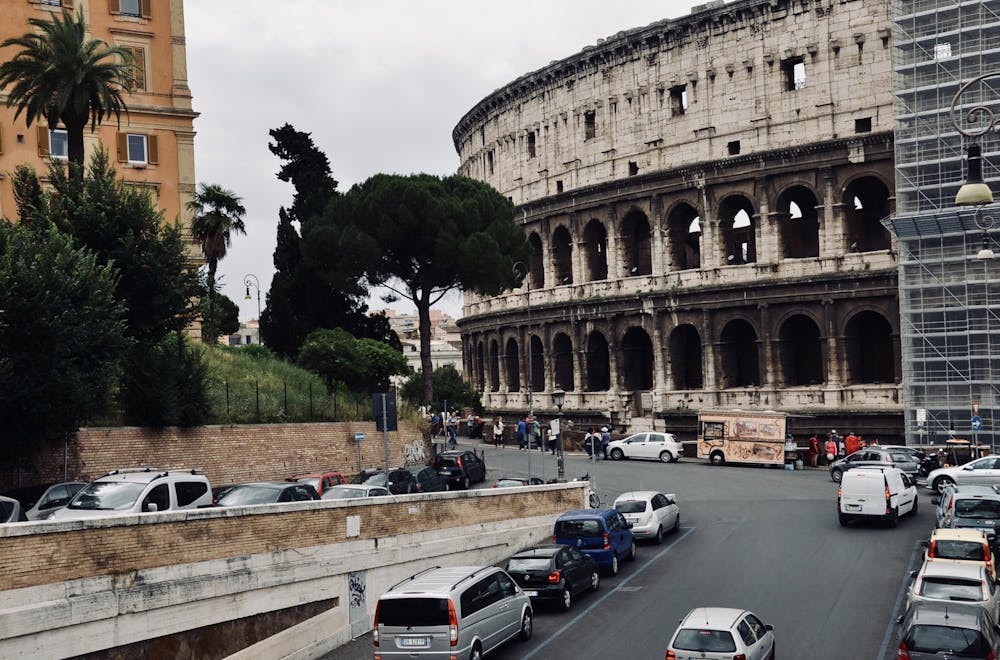
Over the past five months, Penn students have flocked back to their home cities or remained near campus as the COVID-19 pandemic continued its spread. With the summer rushing to a close, many of us now find ourselves in the position of deciding where we’ll spend our fall semester—and, more broadly, imagining our hopes for the coming year.
Since Penn is a school that focuses heavily on a variety of global experiences, it wouldn’t be surprising if the idle monotony of homebound quarantine reignited some students’ desire to resume traveling. Vacation seems akin to escapism and a return to normalcy within life amid the pandemic—and it’s a common occurrence at Penn to hear of students’ frequent, luxurious, and sometimes spur-of-the-moment trips.
While some may already be planning their next international trip, global travel restrictions remind us that such journeys may have to be pushed well into the future. In this rare moment, in which travel has taken a historic plunge, take the time to analyze the harmful effects of pre-pandemic mass tourism and how the never-ending chase for “experiences” leaves many behind.
In many ways, student vacationers on week-long trips to popular tourist destinations maintain a level of separation from the local community and ecosystem. Penn has the shortest total combined breaks among the Ivy League, often prompting students to book quick trips before heading back to campus. This vacation "bubble" allows one to enjoy the sights, shopping, or nature and fly home before ever fully reckoning with the impact such a stream of travelers have on these cities and towns. The popular idea that tourism can only benefit destination spots, boosting local economies and creating jobs for those who live there, falls flat in the details.
In Venice, Italy, for example, a perpetual influx of tourists in previous years resulted in fast food chains and temporary souvenir stalls replacing small businesses and artisans’ shops. Although the city is centered around mass international tourism, the level of constant visitors leads to a deterioration in quality of life for local residents. Surging housing costs, a decrease in secure, long-term job opportunities, increased pollution, and dwindling spaces for young people to live and work have left Venetians struggling for a solution.
The idyllic Italian city is not an isolated case. Airbnb’s staggering rise as a go-to accommodation option for vacationers in recent years has had an overwhelmingly negative impact on local residents in major cities across Europe—as short-term rentals surge and tourists populate the properties, long-term rent costs skyrocket and many listings begin to disappear. In London, the city with the highest number of Airbnb listings worldwide, a recent report found that 2.7% of United Kingdom landlords shifting from long-term leasing to short-term rentals has meant 50,000 less homes available for local residents.
Similar struggles lead government officials in Amsterdam, Paris, Barcelona, Vienna, Berlin, and more to push for greater regulation of Airbnb in order to reverse these detrimental effects on their housing markets. These rapidly growing consequences (Airbnb is targeting to host 1 billion guests per year by 2028) have little obvious effect on the traveler taking a weeklong getaway, but to turn a blind eye to the tourism industry’s harmful repercussions for local residents is to ignore an overwhelming issue.
On a broader scale, over-tourism contributes significantly to environmental damages. The carbon emissions from a single person’s five hour flight equate to roughly 32 square feet of shrinkage in Arctic sea ice. Cruise ships’ dangerous carbon dioxide emissions cause a single person’s carbon footprint to triple in one trip, and pressure on local resources, land degradation, and solid waste increase in parallel with incoming travelers. In recent history, such overlapping and interconnected impacts of an already expanding travel industry are seemingly “outnumbered” by the reality of the many who are swept up by travel’s absorbing allure.
Many Penn students trade in the currency of experiences, often remaining in perpetual insulation from the adverse effects of tourism as their existence in each destination is, at best, a transient detour from everyday life. This is especially the case for us because our travel is typically confined to brief, weeks-long breaks throughout the school year or temporarily during the summer.
Although these periods are viewed as opportunities to maximize enjoyment, it is crucial to consider the lasting costs your temporary trip may have on the social, economic, and environmental ecosystems of your destination—especially when paired with the millions of other visitors who may come each year. When we think in retrospect on such trips, many will only recall pleasant experiences, seeing beautiful sights, experiencing new things with friends outside of campus--but the widespread damages of mass tourism will likely run rampant again unless we start to look beyond ourselves.
Today, life has come to an effective standstill as a result of the COVID-19 pandemic. Although you may yearn for the next international vacation or wish for the travel business to “return to normal,” our focus in this time should instead be to reckon with the costs an industry that has run unrestrained for so long. We need to architect a future in which mass over-tourism finally loses its gilded supremacy.

ISAMI MCCOWAN is a rising College senior from Durham, N.C. studying English with a concentration in Cinema Studies. Her email address is isami@sas.upenn.edu.
Have opinions of your own you would like to share? Submit a guest column.
The Daily Pennsylvanian is an independent, student-run newspaper. Please consider making a donation to support the coverage that shapes the University. Your generosity ensures a future of strong journalism at Penn.
Donate




